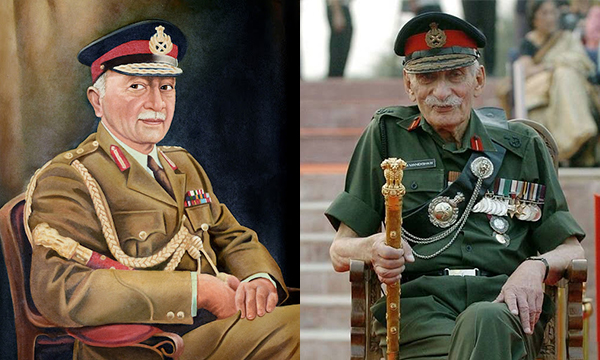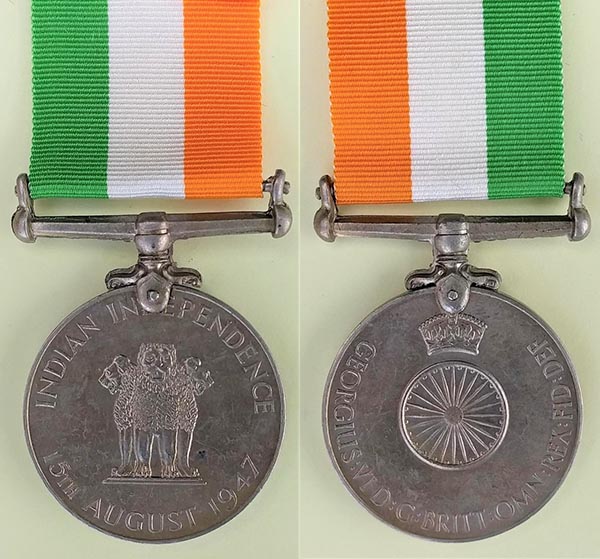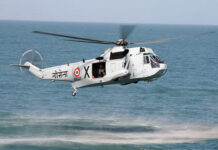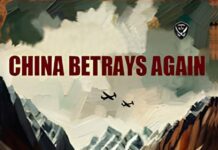While Independent India enters its 75th year, India’s Army has regiments that are nearly 250 years old. This is because the Indian Army was shaped by Imperial Britain and was the sword arm of the Raj. The army was consciously kept apart away from public control. Unlike most nations that threw off colonial yokes, India took on its British rulers by way of a struggle that remained, very largely, non-violent. The Indian Army was not part of it. Mahatma Gandhi was adamant on this score. “The movement was to be non-violent and help from the Indian troops was sure to bring on the violence he meant to avoid at all costs.” As the bells tolled for British departure from India and the subcontinent plunged into an orgy of violence, the dire need for a professional army dawned on the new powers-that-be. And the Indian Army did not let the nation down.
Demand for Indianisation
‘Indianisation’ of the Indian Army is truly an oxymoronic term, yet it marked a very important phase in our pre-Independence history when far-sighted nationalists in the Governor General’s Legislative Assembly pressed for recruitment of Indians into the officer corps. Hithertofore, the Indian Army was manned by Indians, but invariably led by the British. As Stephen Cohen says: “Motilal Nehru, Jinnah, Sivaswamy Iyer, Amarnath Jha, and later H.N. Kunzru, were not only interested in Indianising the officer corps and promoting equalitarian recruitment to the ranks, they were also concerned with the nationalization of the Indian military.”
The clamour for Indianisation and the Indian Army’s stellar performance in World War I made the British take a few hesitant steps before establishing the Prince of Wales Royal Indian Military College (now Rashtriya Indian Military College – RIMC), Dehra Dun in 1922, which prepared selected boys (mostly scions of loyal landowners and nobility) for admission to the Royal Military College, Sandhurst (UK) where they were trained to join the army as King’s Commissioned Indian Officers (KCIOs), though in miniscule numbers. Among the early KCIOs were legends like Field Marshal Cariappa (the first Indian to head the Indian Army) and General Thimayya.
ALSO READ: GOVERNANCE – The IAS and India’s Security
Indian dis-satisfaction at the slow pace of officer intake led to the creation, in 1932, of the Indian Military Academy (IMA), Dehra Dun, to train Indian Commissioned Officers (ICOs) to command only Indian troops in army units selected for Indianisation. Newly commissioned Indian officers posted to these units would, of course, not have any white officer under their command. Sandhurst intake ended. The IMA was to achieve complete Indianisation of the officer corps in a leisurely 75 years! Fittingly, amongst the first batch to pass out was Field Marshal Sam Manekshaw, who, in 1969 became the first Indian Army Chief to be trained at IMA. (This batch also gave Army Chiefs to Pakistan – Mohammad Musa, and Burma – Smith Dun).
The Second World War derailed British plans to keep Indianisation on a leash. The Indian Army expanded from a pre-WW II strength of 1,89,000 to 2.6 million in 1945 – the largest volunteer army the world has known. Officer strength also expanded exponentially – from around 2,800 in 1939 to 22,000 in 1945, 8,500 being Indians. The Indian Army again amply proved its mettle in three continents and deserves most of the credit for halting the invading Japanese on the borders of India and pushing them back. Thus, when the British departed in 1947, the post-demobilization Indian Army officer corps had a fair number of Indians, though mostly in the lower and middle rungs.
Towards a Professional National Army
It is presumed by some that Indian officers were impervious to the desire for Independence that began sweeping India. This is far from reality and does great dis-service to these pioneering Indians who had to tread a narrow path, facing racism in the Mess and a British officer brotherhood largely hostile to the entry of ‘natives’ in their ranks, yet persevering to emerge as true professionals who laid the foundations of the Indian Army as we know it today – an apolitical, professional national army. Humphrey Evans, General Thimayya’s biographer, records that at the height of the Civil Disobedience Movement, Thimayya and a group of young like-minded officers fired by nationalistic fervour, went to Pandit Motilal Nehru, offered to resign their commissions and plunge into the freedom struggle. Motilal Nehru presciently told them to hang in there: “Nothing would please the British more than your resignations. For thirty years we have fought for army Indianisation. We’re now winning the fight… We’re going to win Independence… sooner or later the British will be driven out. When that happens, India will stand alone. We will have no one to protect us but ourselves. It is then that our survival will depend upon men like you.” And they heeded this sage advice for the future of India.
Partition
Independence also meant Partition. The Army was deeply affected, undergoing the pain of being cleaved into the Indian and Pakistan armies on religious lines, with the concomitant division of manpower and assets in two-thirds to one-third ratio. In the midst of the carnage of Partition, considerable Army attention remained focussed on asset division.
ALSO READ: Parliamentary Democracy and India’s Security
This had its tragi-comic moments as Pakistani officers’ demands often went to absurd dog-in-the-manger lengths – if there was a thirty volume encyclopaedia, they demanded ten volumes as their rightful share; dinner sets were split; priceless memorabilia sundered. Every large military establishment and most regiments have their own ‘partition lore’. Lieutenant General S.D. Verma describes the process with respect to the Staff College in his memoir ‘To Serve with Honour’. He recounts that the supreme headquarters to oversee the modalities of partitioning army assets, set up in New Delhi under Field Marshal Sir Claude Auchinleck, decreed that as Army Headquarters Library was to stay with India, the Quetta Staff College’s library was to go to Pakistan. That left basically the Mess assets to divide. A bone of contention became the Camberley Owl, a lovely silver piece that has a hallowed place in Defence Services Staff College, Wellington. General (then Colonel) Verma, the senior Indian instructor and to-be Commandant of DSSC, India, was able to clinch the argument for the Camberley Owl in India’s favour by pointing out that the Staff College Camberley (UK) had gifted it to ‘The Indian Staff College’ as the inscription said, hence it had to go to India – QED!
Indianisation – The Last Phase
The shedding of British Imperial trappings post-Independence was the third phase of Indianisation and was not without its hiccups and delay. The robust response of the Indian Army to the Pakistani invasion of Kashmir scant months after Independence saw its leadership flower confidently. Yet at the close of the war, when India wished to honour its bravehearts for deeds of gallantry, a peculiar hurdle came in the way – newly independent India and Pakistan were both Dominions of the British Commonwealth, presided over by Governor Generals representing the British Crown. Gallantry awards being approved by the Head of State, when recommendations for gallantry awards were made the British were flummoxed – squirming at the thought of giving the same medals to soldiers of two of their Dominions who had fought against one another! As a matter of fact, even the Indian Independence Medal, instituted in 1948 for grant to all members of the Indian Armed forces who were serving at the time of Independence carries the Ashokan Dharma Chakra (our National symbol) surmounted by the Tudor Crown, carrying the inscription GEORGIUS VI D:G: BRITT:OMN: REX: FID DEF on the obverse and the Ashoka Lions with the inscription INDIAN INDEPEPENDENCE and the date 15th August 1947 on the reverse.
Hence, the Army had to wait till India became a Republic to shed the last vestiges of British rule for the major Indianisation still required. Indian gallantry awards were instituted in 1950 and awarded with retrospective effect from 15 August 1947. A unique custom was introduced post-Independence: the Junior Commissioned Officers (JCOs) invite the officers to the JCOs’ Mess on Independence Day which the officers reciprocate by inviting the JCOs to the Officers’ Mess on Republic Day, thus fostering camaraderie and interaction. Badges of rank and regimental insignia carrying the British crown were Indianised with the Ashoka Lions replacing the crown. The word ‘Royal’ in regimental names was dropped. Latin in regimental mottos like in the Ordnance Corps’ ‘Sua Tela Tonanti’ (To the Warrior his Arms) eventually changed to the Hindi ‘Shastra se Shakti’. Marching tunes which had no resonance with India too were gradually replaced. The Garhwal Rifles changed theirs from the Scottish highlands tune ‘Barren Rocks of Aden’ to the uplifting ‘Badhe Chalo Garhwalio, Badhe Chalo’. ‘Jai Hind’ has become a universal greeting in the Army, as have pride inducing marching tunes: ‘Sare Jahan Se Achcha Hindustan Hamara’.
All armies are tradition-bound institutions, where the old ways are cherished because they give stability and generate pride. In this phase of Indianisation, the sage advice and guidance of much-respected officers like Field Marshal Cariappa was invaluable, ensuring continuity while assimilating change.
Customs evolve. British-era traditions have been adapted to Indian culture. Yet, the ethos of the Indian Army has always been uniquely Indian – Naam (honour of the regiment, army and the country); Namak (loyalty to the regiment and the country); Nishan (upholding the honour of the regiment’s flag) have been the bedrock upon which rests the Indian soldiers’ unswerving commitment – often over and beyond the call of duty. Philip Mason summed up this ethos in the title of the book which he wrote about the Indian Army: ‘A Matter of Honour’. And forever it shall be so.



















